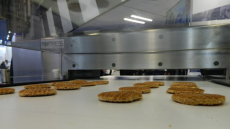Study highlights fast way to screen chips for acrylamide levels
The findings from researchers based in Chile and Norway are published in an upcoming issue of the journal Food Chemistry and show that the proposed analytical system also facilitates individual potato chip analysis, which makes it possible to automatically remove individual chips with elevated acrylamide levels.
Determination of acrylamide contents in potato chips is currently necessary due to its potentially toxic attributes, and the fact that very high concentrations can be produced in amylaceous fried foodstuffs, continue the researchers.
And the authors note that in European factories, computer vision systems are used for online evaluation of potato chips, allowing them to be sorted according to defects such as black spots or blisters.
“However, standard procedures for acrylamide determination are based on time consuming and expensive methods of chromatography and mass spectroscopy, which can hardly be implemented as routine analysis at industrial sites,” they argue.
Near infrared spectroscopy (NIR) is a common technique for routine analysis of bulk chemistry in different raw materials and products because it allows a fast and non-destructive analysis of samples, said the authors.
They said that the objective of this research was to predict the acrylamide, moisture and oil content, the quality control parameters, in potato chips using on-line NIR interactance imaging.
The study
Sixty samples of potato chips from individual frying runs were measured on-line using a VIS/NIR interactance line scanner. The same samples were analysed in the laboratory to determine their corresponding moisture, acrylamide and oil contents, explained the authors.
The mean VIS and NIR spectra for the 60 samples were modelled against the reference values for acrylamide, fat and dry matter using partial least squares regression (PLSR), and the regression models were validated using full cross-validation.
The researchers found that on-line NIR interactance could predict fat and dry matter of potato chips with high accuracy, with prediction errors of 0.99 and 0.86 per cent (w/w) respectively. The corresponding correlations between predicted values and reference values were 0.99 and 0.97 for fat and dry matter.
But for acrylamide, they reported that an average prediction error of 266 μg/kg was achieved using NIR and VIS signals in combination. The correlation between predicted values and reference values was 0.83 for this model, said the researchers.
“The acrylamide prediction error is fairly high, and indicates that the system should be used for screening or classification rather than prediction,” concluded the researchers who added that the system may be better suite to separate samples with very high acrylamide content from samples with average to low contents.
Source: Food Chemistry
Published online ahead of print:
Title: On-line monitoring of fat, dry matter and acrylamide content in potato chips using near infrared interactance and visual reflectance imaging
Authors: F. Pedreschi, V.H. Segtnan, S.H. Knutsen











